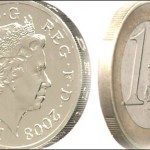Friday’s trade (in GMT terms) saw NZD/USD within the range of 0.7071-0.7231. The pair closed at 0.7210, soaring 1.97% compared to Thursdays close. It has been the 20th gain in the past 32 trading days and also the steepest one since June 3rd, when the major pair advanced 2.16%. The daily high has been the highest level since July 14th, when a high of 0.7297 was registered. In weekly terms, NZD/USD added 3.03% to its value during the current week. It has been the 15th gain in the past 30 weeks and also the sharpest one since the week ended on June 5th. The major pair went up 1.04% in July, following a 5.47% advance in June. The latter has been the best monthly performance since October 2015, when the cross appreciated 5.97%.
On Monday (August 1st) NZD/USD trading may be influenced by the following macroeconomic reports as listed below.
Fundamentals
United States
Manufacturing PMI by Markit – final reading
The final estimate of the Manufacturing Purchasing Managers Index for July probably confirmed the preliminary reading of 52.9, according to the median forecast by analysts. It has been the highest PMI reading since October 2015, when a final 54.1 was reported. In June the final seasonally adjusted PMI stood at 51.3, down from a preliminary reading of 51.4.
According to the preliminary report by Markit, ”Higher levels of manufacturing production have now been recorded for the past two months, with the latest expansion the fastest since November 2015.”
”An acceleration of production growth was driven by a robust rise in new business volumes in July. The latest expansion was the fastest for nine months and close to its post-crisis average. Meanwhile, new export orders rose at a weaker pace than seen for overall new business, suggesting that domestic markets remained the main driver of growth in July.”
”Manufacturers also boosted their input buying in response to greater workloads. Higher levels of purchasing activity have now been recorded for three months running, but the latest survey indicated that input stocks were depleted again. Finished goods inventories also decreased in July, which firms linked to deliberate stock reduction policies and associated efforts to boost efficiency”, Markit stated.
Values above the key level of 50.0 indicate predominant optimism (expanding activity). In case the final PMI for July came in line with expectations or accelerated even further, this would lead to a moderate bullish impact on the US dollar. The final reading is due out at 13:45 GMT.
Manufacturing PMI by the ISM
Activity in United States’ manufacturing sector probably increased at a slower pace in July, with the corresponding manufacturing PMI coming in at a reading of 53.0, according to market expectations, down from 53.2 in June. If so, this would be the fifth consecutive month of expansion, which followed four successive months of contraction.
Junes PMI level has been the highest one since February 2015. The New Orders Index came in at 57.0 in June, rising from 55.7 in May. The sub-gauge of production was reported at 54.7 in June, accelerating from 52.6 in the preceding month. The index of employment rose to a value of 50.4 in June from 49.2 in the preceding month. The gauge of prices was at 60.5 in June, falling from 63.5 in May, which suggested lower prices of raw materials for the first time in four months. In May, out of a total of 18 manufacturing industries, 13 reported growth, 3 reported contraction and 2 reported no change in overall business activity, according to the report by the Institute for Supply Management (ISM).
Readings above the key level of 50.0 are indicative of expanding activity in the sector of manufacturing. In case, however, the PMI slowed down more than anticipated, this would have a strong bearish effect on the US dollar. The Institute for Supply Management (ISM) is to release the official reading at 14:00 GMT.
Correlation with other Majors
Taking into account the business week ended on July 29th and the daily closing levels of the currency pairs involved, we come to the following conclusions in regard to the strength of relationship:
NZD/USD to AUD/USD (0.9490, or very strong)
NZD/USD to EUR/USD (0.9023, or very strong)
NZD/USD to GBP/USD (0.7639, or strong)
NZD/USD to USD/CHF (-0.7771, or strong)
NZD/USD to USD/JPY (-0.9123, or very strong)
NZD/USD to USD/CAD (-0.9392, or very strong)
1. During the examined period NZD/USD moved strongly in one and the same direction with GBP/USD, while moving strongly in the opposite direction compared to USD/CHF.
2. NZD/USD moved almost equally in one and the same direction with EUR/USD and AUD/USD during the week. This relationship has been the most pronounced between NZD/USD and AUD/USD.
3. NZD/USD moved almost equally in the opposite direction compared to USD/JPY and USD/CAD during the period in question. This relationship has been the most pronounced between NZD/USD and USD/CAD.
Daily, Weekly and Monthly Pivot Levels
By employing the traditional calculation method, the Monday levels of importance for NZD/USD are presented as follows:
Central Pivot Point – 0.7171
R1 – 0.7270
R2 – 0.7331
R3 – 0.7430
R4 – 0.7530
S1 – 0.7110
S2 – 0.7011
S3 – 0.6950
S4 – 0.6890
By using the traditional method of calculation again, the weekly levels of importance for NZD/USD are presented as follows:
Central Pivot Point – 0.7133
R1 – 0.7308
R2 – 0.7407
R3 – 0.7582
R4 – 0.7758
S1 – 0.7034
S2 – 0.6859
S3 – 0.6760
S4 – 0.6662
In monthly terms, for NZD/USD we have the following pivots:
Central Pivot Point – 0.7163
R1 – 0.7373
R2 – 0.7537
R3 – 0.7747
R4 – 0.7958
S1 – 0.6999
S2 – 0.6789
S3 – 0.6625
S4 – 0.6462





